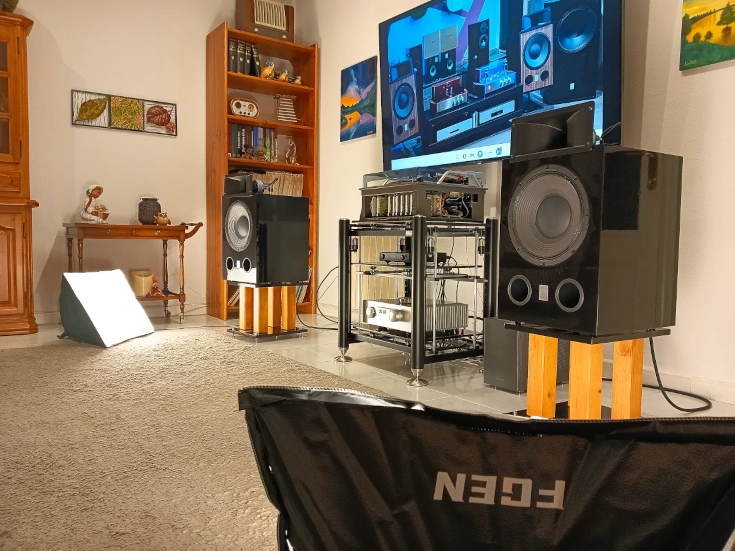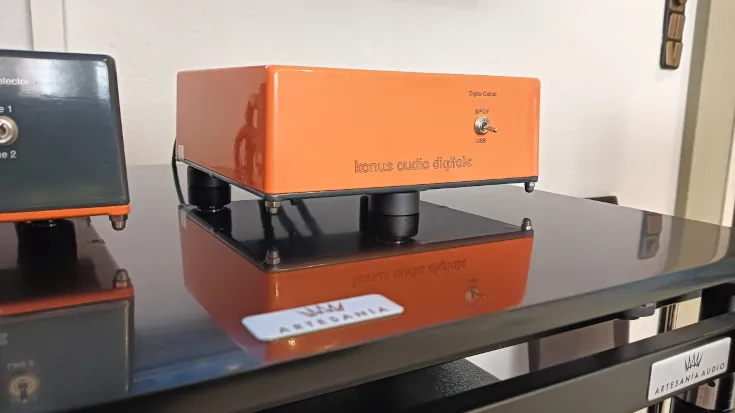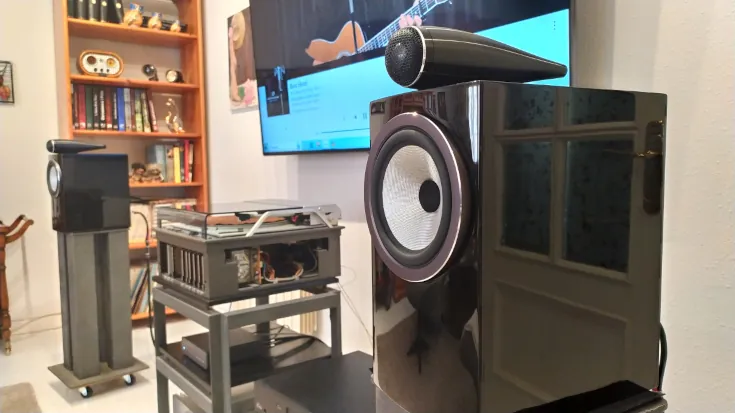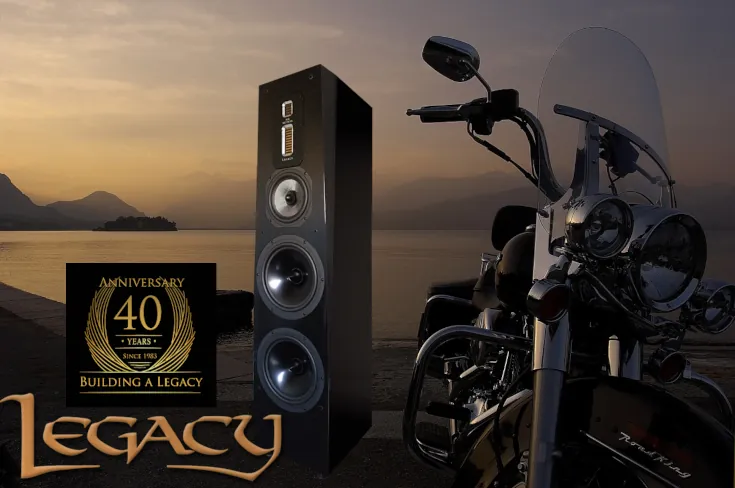Perfect Stranger


When you step outside your comfort zone, everything is new. And in this polarized world, where social media sets a rather unedifying tone, it's difficult to write about products that are different, very different. I put myself in the shoes of someone who has put a lot of personal and financial effort into creating a product, perfecting it, and making it known. Adjusting it over and over again, quietly, as things are done. And when, finally, this product is visible to everyone, the amount of thoughtless, irrelevant, and indecent things they have to read. I feel sorry for them, and I feel sorry for the hobby; this impoverishes us as hobbyists and as people.
Throughout my life, I have tried many different products. From the outset, I could get an idea of how they worked. Ideas that could be justified or not. Sometimes with loud disappointments, and other times, less often, with great surprise and joy on my part.
The path of the pioneers
Let's be honest, people who write about high fidelity, read about high fidelity, I hope this comes as no surprise. And whether voluntarily or involuntarily, we influence each other. In my case, to avoid this contamination as much as possible, I read after publishing, to assess the extent to which I am in line with what others think or if I am the most discordant voice. Even with these precautions, something remains inside and surely, in the next product analysis, something will have remained inside me. It is inevitable, and in other environments it is called culture.
But in this case, I went in completely blind. There is nothing published (that I have been able to find), there is very little information. The manufacturer has had a website under construction since 2022. Luckily for me, the local distributor (Broker Audio) gave me invaluable help: "Take your time, try it out, and discover it for yourself."
phiTon_resonaTors
This passive component for room sound correction comes in different sizes and measurements. Luckily for me, I received a huge collection of them (4 M, 4 L, 4 XL, and 1 XXL), which allowed me to experiment with any distribution of the product (resonators) in the room. I even went further, but I'll tell you more about that later.
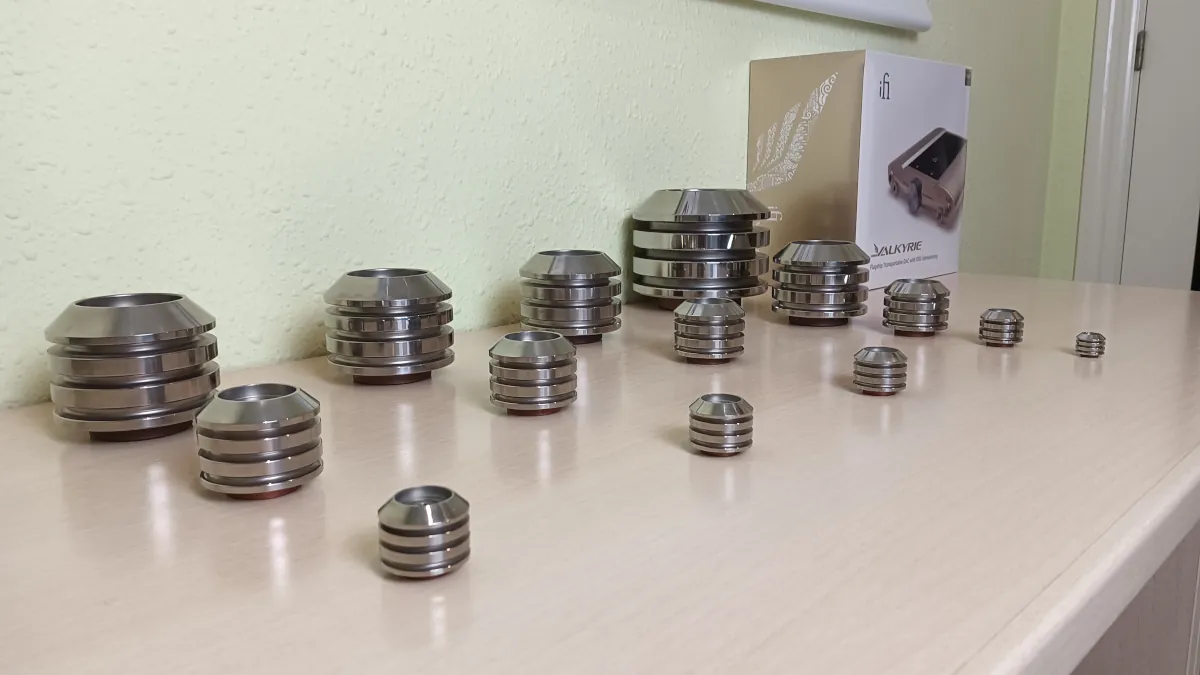
I will begin by positioning the product to avoid confusion or erroneous initial assessments. This is a very exclusive product, available to very few people. Only one in a thousand of those reading this will have been able to try it once in their lives for an hour. And even fewer will own one.
Physically speaking, they are heavy. They are made of two metals that fit together in up to four pieces. They are stacked, not one inside the other. From the sound observations made, it is clear that each one performs a different function in the room frequencies. As they are passive, they must be positioned according to the needs of each space or sound generation within it, to be more precise.
These are my first impressions, very basic to start with. Before going into more detail about the product, I would like to tell you a few things about how it performed in my room.

How did it "sound" in my living room?
Having visited the Broker Audio facilities, I tried to replicate their layout, which is similar to the Spanish distributor's showroom. Simply put, I placed a model consisting of three pieces on top of each speaker, M+L+XL (see photo). And the large one, M+L+XL+XXL, on one side of the sofa, on the side where I have the most problems in the room. At this point, it is very important to mention the system associated with this moment:

Equipment used in testing
Sound source:
» NuPrime DAC 9X
» Roon Server
» Qobuz Studio
Power amplification:
» Bow Technologies Wazoo XL
Speakers:
» RadioTehnika Giant FS-100N
Cables:
» Wires4Music for wiring:
» Horus Hybrid RCA interconnect
» Evolution on speakers and mains
HiFi rack:
» Artesanía Audio Exoteryc Rack PRO
I don't even remember what music I had on the Roon server, and suddenly I looked up. It's a reflex I have when I like something. It makes no sense, it doesn't help me hear better or anything. It's just a reflex when the sound surprises me. We have to put this into context. All good audiophiles know how their system sounds. Whether it's better or worse. We know its strengths and weaknesses. Yes, those flaws we try to hide when friends come over, giving them a weird music session, but they sound good on our system.

The NuPrime DAC 9x is a gem of a product that I have at home. However, it doesn't sound right with one of my favorite albums, Barn by Neil Young. And with Decade, we could say that it's been a few days. I think you all understand me. To enjoy these pieces of music, I often use the iFi Audio Zen One Signature. The NuPrime's valve sound simulation combines with the special sound of this recording to produce a blurred sound, with a tendency towards slight distortion and some sound saturation. Obviously, I'm not talking about anything horrible, but rather details and nuances that make it impossible to fully enjoy the music. We're talking about the fine line between the best and the excessive.
And suddenly, these "forbidden" recordings were sounding great in the room with the "wrong" DAC. I couldn't believe it. I really mean it. For this reason, I wanted to test the placebo effect in the following way: "Place two of them in different places where my wife and I spend many hours a day. If these phiTon_resonaTors somehow made us feel better in our daily activities, we could understand that they did not affect the sound, but rather the people, and therefore their assessment of things." Nothing. Honestly, I didn't notice anything extraordinary in my office, and I remained the same in every way. She didn't report anything either.
You can take the second placebo effect as proven. Remove the resonators from the room and bring back our friend Neil... And Neil did not disappoint, he sounded the same as always. The previous magic had vanished.
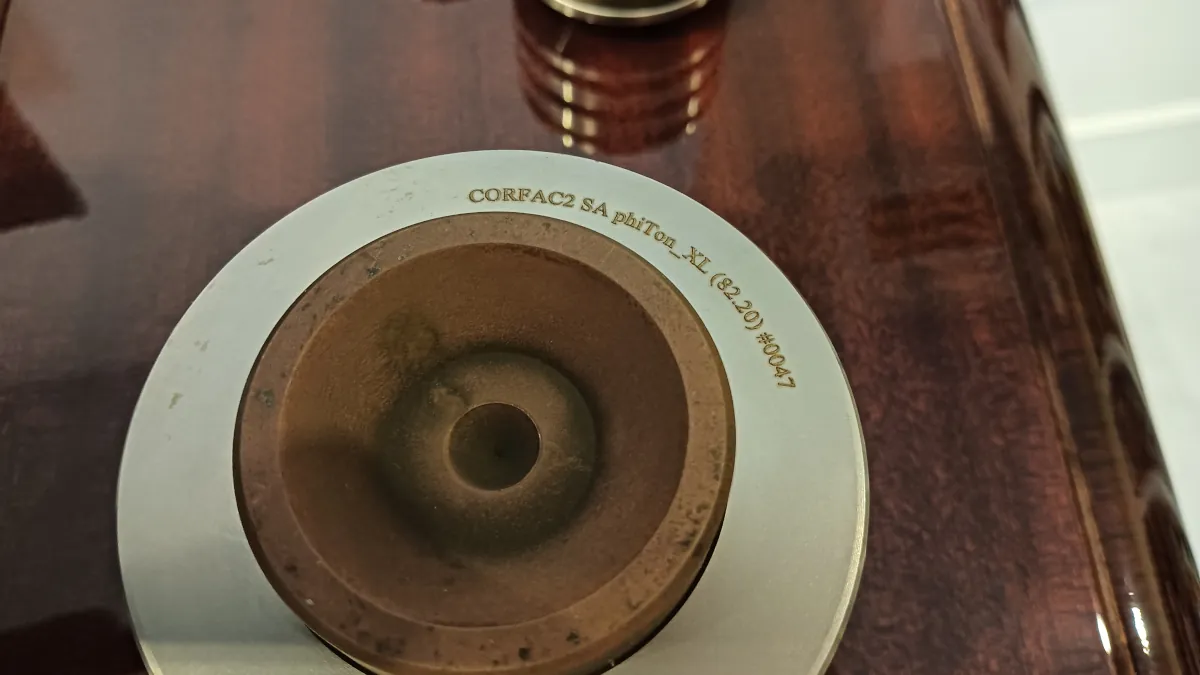
After many more hours of use, I realized that at high sound pressure levels, I preferred the sound using only the two small pieces (M+L) on top of the speakers, as the sound was more relaxed and less crystalline. However, when listening to the same music at much lower volumes, I preferred the three pieces mounted (M+L+XL).
Pink Floyd, "The Wall" and the neighbors

I've been living in the same place for 25 years. I test music systems and my neighbors have never complained about me, never. And it makes sense. I can't turn the volume up too high because I have a resonance point on my left wall that forces me to limit myself so I don't suffer the effects. On a Sunday afternoon, I have the following arrangement of resonators. The large phiTon_resonaTors (M+L+XL+XXL) between the sofa and the left wall. Another three-piece (M+L+XL) in a straight line with the large one, at a height of about 70 cm and virtually closing off my left wall. In addition, there are two others, in a two-piece configuration (M+L), above each speaker.
"The Wall" starts playing and this powerful music makes me want more. I turn up the volume. It asks for more and there is no resonance problem in the room that would advise against it. I turn up the volume even more. My wife appears and warns me, "You're playing it really loud today." I ignore her. My room isn't suffering, so I'm not playing it as loud as it seems. "The Happiest Days of Our Lives." You know it. I listen to it once and play it again, but this time I turn up the volume. I played it two more times, or three, it doesn't matter. I had never heard it with such clarity and powerful bass in my house. Never ever. My RadioTehnika speakers clearly showed their limitations. I had never pushed them to this point before either. I was smiling because I was experiencing so many sensations and experiences, both auditory and analytical, that I couldn't stop absorbing all the information I was receiving. A neighbor's knock abruptly interrupted that moment. My wife, asking me what was wrong, brought me back to this world. How could I explain that I had traveled to a wonderful place where my living room didn't complain? The neighbors: yes, my wife: a lot, the living room: no.
Everything written so far is my personal experience, which I can attest to; however, I am aware that for many of you, this means nothing, so I am going to highlight some of the most striking points of the product patent. Everything from here on is copy and paste.
Mr. Corrado Faccioni, the company's alma mater, created a PDF with basic explanations of how his device works. This is an excerpt, and at the end, there is a link to the complete document.
The basic principle behind the phiTon_resonaTors stems from the fact, that any type of movement of mechanical components induces an oscillation behavior which contains both dissonant and resonant parts and that even the electromagnetic oscillations contain in their spectrum sub-harmonics and harmonics being both resonant and dissonant compared to the fundamental frequency.
For example: the higher harmonics emitted by a musical instrument are dependent on the type of instrument, and it is for this reason that a violin has a different sound than that of a piano.
However, both a piano and a violin can act in a more or less harmonic way depending on the proportion of resonant and dissonant parts within the spectrum of oscillation and depending on the relationship between these parts.
The more the individual harmonics within the spectrum of oscillation of a musical instrument are integrated harmoniously as to the musical relationship, being this mathematical, the higher the quality of the instrument will be.
In the case of electromagnetic oscillations, the harmonization of the oscillation behavior results in a definitively better quality, or in a higher purity, of the transmitted signals.
The concepts of resonance and dissonance mentioned above can be more easily understood by referring to the Torkado model developed by the German physicist Gabi Müller (www.torkado.de).
Resonant oscillations are related to each other by means of frequency ratios defined by integers and fractions thereof (for example 1, 2, 3, 1/2, 1/3, 2/3, 3/4) and ensure an absorption of ideal energy, while the oscillations resulting from dissonant frequency ratios are defined by irrational numbers and ensure a transport of energy with little resistance.
In nature occur phenomena both of resonance and dissonance which together form a harmonious unit.
In practice the oscillations, to which any object is subjected to, often include components of non-harmonic oscillation, which derive from the different resonance characteristics of the material composition used for the manufacturing of the object and that negatively influences the overall oscillation behavior of the latter.
In order to achieve harmonization of the oscillation behavior, one can try to divert these non-harmonic oscillation components, but in doing so some of the energy of the oscillation is wasted and thus the degree of effectiveness of an oscillating object is reduced.
The approach on which the phiTon_resonaTors rely on instead, is to make sure that the components of resonant oscillation (based on relations between integers) and the components of dissonant oscillation (based on irrational numbers) have wavelengths that overlap in a harmonious way, ideally in relation to the Φ music system (i.e. based on the number Φ = phi), otherwise known as the golden ratio or golden number).
The approach of organizing harmonically dissonant and resonant components using a device whose dimensions are defined according to the fundamental mathematical model described below allows not only not to waste the energy associated to the dissonant components oscillations but to increase the degree of effectiveness of the oscillating object.
In addition to size, the materials of the phiTon_resonaTors are appropriately chosen in such manner, that they can get into resonance and/or dissonance.
See original document at this link.
This product is patented, and for those who are really into this, you can look up the patent and see all the technical details.
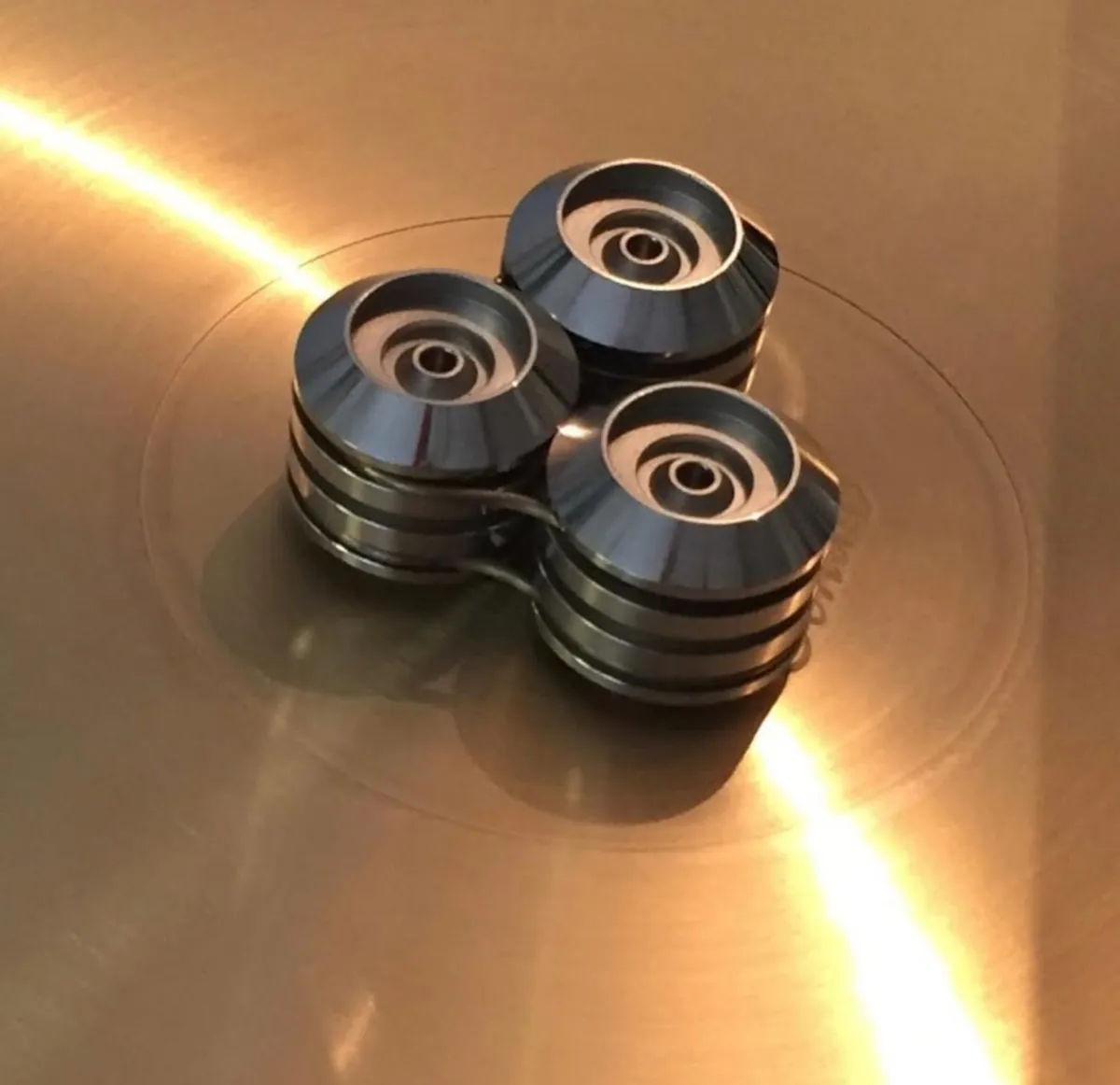
I don't want to end these reviews without a clear, very clear warning. The phiTon_resonaTors system tested in my room and the results obtained are real. And at the same time, they are due to my position as a person who tests and analyzes products. But in real life they don't make sense, since the musical system with which they have been tested is quite inferior to what would be necessary in these cases. In other words, this product needs a much higher quality and class of music system to be able to offer all its advantages. Even so, they have shown their potential. Good, very good.
And to conclude this article, I would just like to mention that there are other products that follow the same development pattern, such as a clamper for turntables or an upgrade for Konus Audio products. I am referring to those that I am aware of; there may be others that I do not know about.
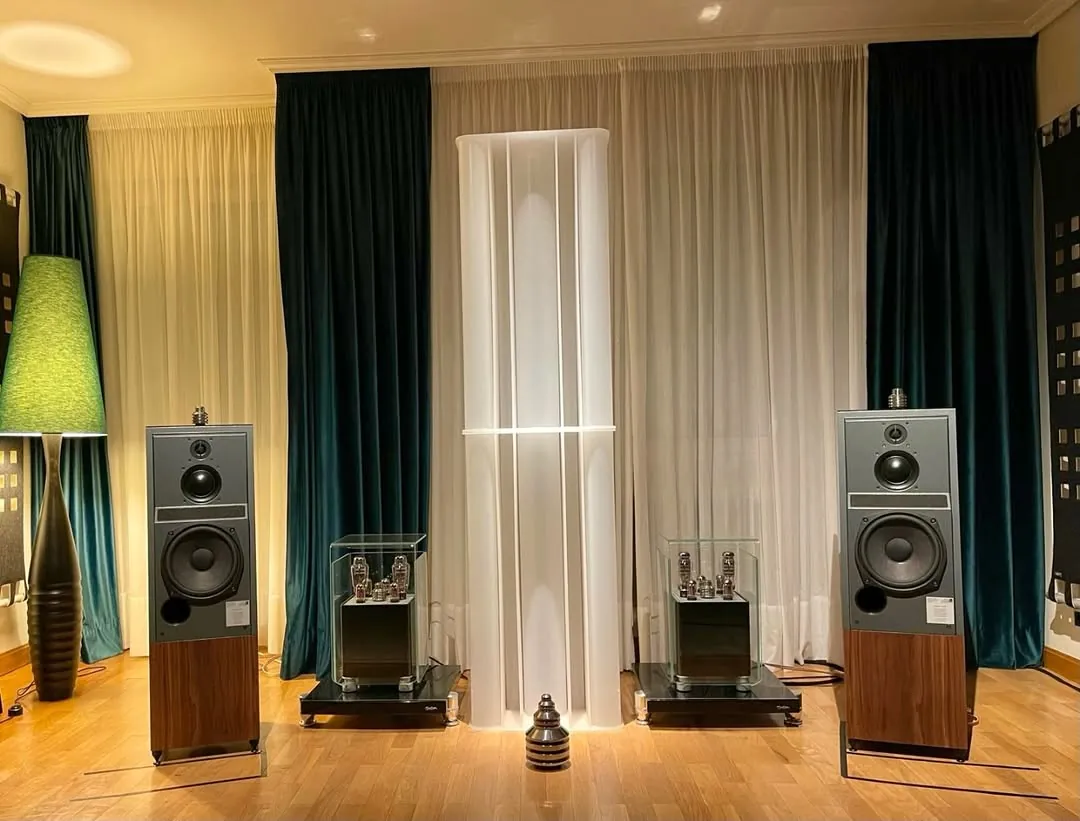
Final conclusions
Sometimes in life, you don't know why, but things just work. So as not to repeat ideas I have already expressed and to add some new ones, I would say that the transformation of the dynamics and sound in my room is closer to having a different room than to having a new product in the same room. I'm sure you understand what I mean.
Vibrations disappear, and there is a clarity and sharpness of sound that was previously unheard of in my room. You lose awareness of the volume of the music. There are many experiences and sensations that leave a lasting impression. Fine tuning according to the volume of the music, adding or removing pieces from the set.
You probably don't know anyone who has one, and you probably won't have the opportunity to try this device. But if you ever get the chance, don't hesitate for a second. It will change the way you understand this hobby.
And yes, you do need to be the lucky owner of a high-end (and expensive) music system to justify this purchase.
| Manufacturer's Website | phiTon_resonaTors |
| Distributor Website | Broker Audio |
| Price | |
| Technical Specifications | |
| User manual |
More review
-
-
Kii Audio Three, the master key to sound (2)
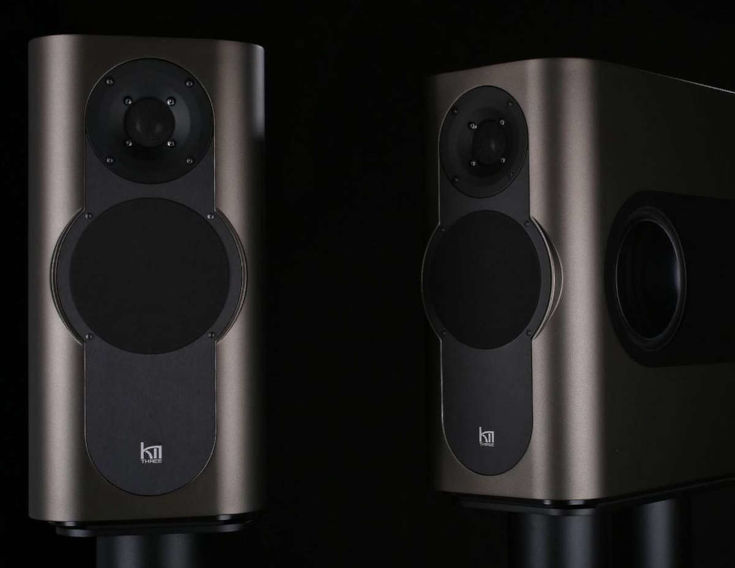
Intelligent DSP correction allows us to achieve a phase response that is identical to the original...
-







